Showing Spotlights 113 - 120 of 240 in category All (newest first):
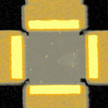 Magnetic field sensors are in very high demand for precise measurements of position, proximity and motion. The most commonly used Hall Effect devices are fabricated with silicon. The sensitivities of these sensors - voltage and current - depend on the device materials electronic properties such as charge carrier mobility and density. However, for futuristic advanced applications higher sensitivity Hall sensors are required than can be achieved with silicon. Researchers now have set a new world record for the sensitivity of Hall sensors using highest quality graphene encapsulated in hexagonal boron nitride.
Magnetic field sensors are in very high demand for precise measurements of position, proximity and motion. The most commonly used Hall Effect devices are fabricated with silicon. The sensitivities of these sensors - voltage and current - depend on the device materials electronic properties such as charge carrier mobility and density. However, for futuristic advanced applications higher sensitivity Hall sensors are required than can be achieved with silicon. Researchers now have set a new world record for the sensitivity of Hall sensors using highest quality graphene encapsulated in hexagonal boron nitride.
May 21st, 2015
 Presently, several techniques for detecting mRNAs are available,which include in situ hybridization and polymerase chain reaction. However, these single-point and end-point techniques require the killing of the cells and are thus unable to capture the expression of mRNA in real time and locality with high precision. In new work, scientists describe a new way of preparing functional DNA nanostructures that can provide accurate quantification and visualization of mRNA transcripts in living cells.
Presently, several techniques for detecting mRNAs are available,which include in situ hybridization and polymerase chain reaction. However, these single-point and end-point techniques require the killing of the cells and are thus unable to capture the expression of mRNA in real time and locality with high precision. In new work, scientists describe a new way of preparing functional DNA nanostructures that can provide accurate quantification and visualization of mRNA transcripts in living cells.
May 6th, 2015
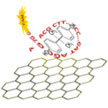 While the actual toxicity of Bisphenol A (BPA) is still debated, the direct measurement of BPA is difficult because of the weak response given by conventional electrochemical sensors, and current optical analysis methods are susceptible to the influence of interfering substances. A novel aptamer/graphene oxide FRET biosensor now provides a method for the rapid detection and risk assessment of BPA with high sensitivity and selectivity.
While the actual toxicity of Bisphenol A (BPA) is still debated, the direct measurement of BPA is difficult because of the weak response given by conventional electrochemical sensors, and current optical analysis methods are susceptible to the influence of interfering substances. A novel aptamer/graphene oxide FRET biosensor now provides a method for the rapid detection and risk assessment of BPA with high sensitivity and selectivity.
Apr 13th, 2015
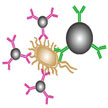 Researchers have developed a magnetic bead based sensor that combines magnetic separation (MS) and magnetic relaxation switch (MRS) for one-step detection of bacteria and viruses with high sensitivity and reproducibility. Compared to conventional assays for detection of bacteria and viruses, this novel MS-MRS assay is easy to operate without laborious pre-treatment, purification and can be adaptable to point-of-care tests easily.
Researchers have developed a magnetic bead based sensor that combines magnetic separation (MS) and magnetic relaxation switch (MRS) for one-step detection of bacteria and viruses with high sensitivity and reproducibility. Compared to conventional assays for detection of bacteria and viruses, this novel MS-MRS assay is easy to operate without laborious pre-treatment, purification and can be adaptable to point-of-care tests easily.
Mar 13th, 2015
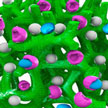 So far, there have been very few research reports on single electrode materials that enable the simultaneous detection of different metabolites - such as glucose, urea, cholesterol, and triglycerides - in whole blood. Moreover, it is a considerable challenge to integrate all required materials and devices on a single chip to ultimately produce a multiplexing biosensor array. In new work, researchers demonstrate that biosensors based on conducting polymer hydrogels enable the precise and full-range detection of different metabolites in human blood.
So far, there have been very few research reports on single electrode materials that enable the simultaneous detection of different metabolites - such as glucose, urea, cholesterol, and triglycerides - in whole blood. Moreover, it is a considerable challenge to integrate all required materials and devices on a single chip to ultimately produce a multiplexing biosensor array. In new work, researchers demonstrate that biosensors based on conducting polymer hydrogels enable the precise and full-range detection of different metabolites in human blood.
Jan 22nd, 2015
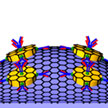 As a prime example of how the integration of multiple disparate nanotechnology fields allows the realization of novel or expanded functionalities, researchers have demonstrated a multimodal sensing device which integrates the functionalities of three traditional single mode sensors. Specifically, the team fabricated a graphene-based multimodal biosensing device, capable of transducing protein binding events into optical, electrical, and mechanical signals.
As a prime example of how the integration of multiple disparate nanotechnology fields allows the realization of novel or expanded functionalities, researchers have demonstrated a multimodal sensing device which integrates the functionalities of three traditional single mode sensors. Specifically, the team fabricated a graphene-based multimodal biosensing device, capable of transducing protein binding events into optical, electrical, and mechanical signals.
Sep 8th, 2014
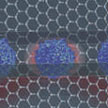 The nanotechnology-enabled detection of a change in individual cells, for instance cell surface charge, presents a new alternative and complementary method for disease detection and diagnosis. Since diseased cells, such as cancer cells, frequently carry information that distinguishes them from normal cells, accurate probing of these cells is critical for early detection of a disease. For this purpose, researchers have now designed a graphene-based optical refractive index sensor.
The nanotechnology-enabled detection of a change in individual cells, for instance cell surface charge, presents a new alternative and complementary method for disease detection and diagnosis. Since diseased cells, such as cancer cells, frequently carry information that distinguishes them from normal cells, accurate probing of these cells is critical for early detection of a disease. For this purpose, researchers have now designed a graphene-based optical refractive index sensor.
May 15th, 2014
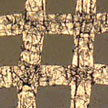 Graphene's piezoresistive effect, combined with its other properties such as ultra-translucency, superior mechanical flexibility and stability, high restorability, and carrier mobility, enables the use of graphene in high-sensitivity strain sensors. Potential application areas for these sensors could be found in flexible display technology, robotics, smart clothing, electronic skin, in vitro diagnostics, implantable devices, and human physiological motion detection - which has been considered as an effective approach to evaluate human health. To demonstrate this application, researchers have now reported on a method to monitor human motions.
Graphene's piezoresistive effect, combined with its other properties such as ultra-translucency, superior mechanical flexibility and stability, high restorability, and carrier mobility, enables the use of graphene in high-sensitivity strain sensors. Potential application areas for these sensors could be found in flexible display technology, robotics, smart clothing, electronic skin, in vitro diagnostics, implantable devices, and human physiological motion detection - which has been considered as an effective approach to evaluate human health. To demonstrate this application, researchers have now reported on a method to monitor human motions.
Apr 30th, 2014
 Magnetic field sensors are in very high demand for precise measurements of position, proximity and motion. The most commonly used Hall Effect devices are fabricated with silicon. The sensitivities of these sensors - voltage and current - depend on the device materials electronic properties such as charge carrier mobility and density. However, for futuristic advanced applications higher sensitivity Hall sensors are required than can be achieved with silicon. Researchers now have set a new world record for the sensitivity of Hall sensors using highest quality graphene encapsulated in hexagonal boron nitride.
Magnetic field sensors are in very high demand for precise measurements of position, proximity and motion. The most commonly used Hall Effect devices are fabricated with silicon. The sensitivities of these sensors - voltage and current - depend on the device materials electronic properties such as charge carrier mobility and density. However, for futuristic advanced applications higher sensitivity Hall sensors are required than can be achieved with silicon. Researchers now have set a new world record for the sensitivity of Hall sensors using highest quality graphene encapsulated in hexagonal boron nitride.
 Subscribe to our Nanotechnology Spotlight feed
Subscribe to our Nanotechnology Spotlight feed





